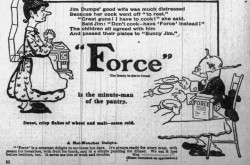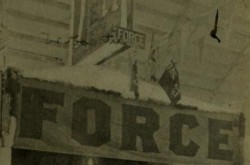Peanut Butter
This article was originally written and submitted as part of a Canada 150 Project, the Innovation Storybook, to crowdsource stories of Canadian innovation with partners across Canada. The content has since been migrated to Ingenium’s Channel, a digital hub featuring curated content related to science, technology and innovation.
The protein substitute.
Step aside, George Washington Carver. Contrary to almost universal belief, the celebrated American botanist didn’t create peanut butter. The stick-to-the-roof-of-your-mouth glory goes to Marcellus Gilmore Edson. In 1884, the Quebec chemist was awarded the first patent for peanut butter—or peanut-candy, as it was called then. Marcellus discovered it when he found that heating the surfaces to grind peanuts to 100 degrees Fahrenheit caused crushed peanuts to emerge as a thick, chunky fluid. When the liquidy grounds cooled, they set as a paste similar to butter. Now enter John Kellogg of the cereal empire, who marketed the creamy spread as a protein substitute for people who couldn’t eat solid food. Sorry, Mr. Carver.














